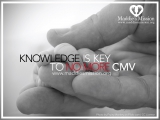

Maddie's Mission, a local grassroots organization in Katy,
Texas, was founded in 2014 shortly after Madeline Leigh Armstrong passed away
due to complications from congenital CMV.
Our mission is to raise awareness about the potentially harmful effects
of CMV during pregnancy and to educate families about prevention measures. We are diligently working to raise CMV awareness
in Katy, Houston, and throughout Texas. Maddie’s Mission conducts CMV awareness
events in Katy and the Houston area, distributes pamphlets to doctor’s offices,
daycares, and mom’s groups, and hosts fundraisers to support CMV research and
education. We truly hope that our
efforts will help other families avoid the pain that congenital CMV has caused
us.
Facts
about Cytomegalovirus
In
the United States, congenital CMV causes one child to become disabled almost
every hour. Given this statistic, it is hard to believe that less than 20% of
women have ever heard of it. CMV is the leading preventable viral cause of
developmental disability in newborns. The key word is preventable. Women must
know that it exists in order to prevent it. Approximately 30,000 babies are
born with congenital CMV each year in the U.S. Of these, 400 die each year due
to severe complications from the virus and at least 5,000 per year suffer
permanent disabilities including such things as hearing loss, vision loss,
cerebral palsy, and many other devastating effects. Almost all are surprised to
learn that disability from CMV affects approximately the same number of
newborns each year as Down Syndrome, a chromosomal disorder familiar to almost
everyone.
CMV
is a common virus that infects people of all ages and is quite prevalent among
children between 1 and 3 years of age, particularly those who attend childcare.
These infections are often silent; that is, those who are infected are not
harmed and may show no symptoms of infection. Close and prolonged contact with
body fluids, such as saliva and urine of young children, is a major cause of
infection for mothers of toddlers, childcare workers, and preschool teachers.
This is only a problem if these women are pregnant (or have weakened immune
systems). In other cases, since the virus is very common and usually not
harmful, it is not necessary to prevent transmission. If a pregnant woman has
never been infected with CMV, she is at risk for a primary infection,
potentially the most serious to her unborn child. About half of all pregnant
women in the U.S. fall into this category. Between 1 and 4% of them will
contract a primary CMV infection during pregnancy and about 40% of these will
transmit CMV to the fetus. The numbers may seem small, but when your loved one
is affected, they might as well be 100%.
It seems unconscionable not to inform women of the risk of infection and most importantly the prevention steps that might help them avoid catching CMV and possibly passing it to their unborn children. In the present climate, most families learn about CMV and prevention steps they could have taken some time after the virus has infected their child, most often after the baby is born.
Prevention
The
prevention steps are simple, but most women would not think to implement them.
That’s why education is so important. It would never occur to most mothers that
sharing food or drink with their own toddlers could pose a threat to their
unborn children. After all, mothers have been sharing body fluids with their
young children, in one way or another, since the day they were born.
With proper education about the simple hygiene precautions they can take, pregnant women have the power to reduce their risk of catching this virus. Medical studies have shown that following three simple hygiene precautions can reduce the chance of catching CMV by as much as 50%. “An ounce of CMV awareness and 3 simple hygiene precautions will significantly reduce the risk of catching CMV during pregnancy,†says Dr. Demmler-Harrison, a leading CMV expert.
3
Simple Hygiene Precautions for Pregnant Women
1. Do not share food or drinks with a toddler. No more “one for mommy and one for baby.â€
2. Avoid contact with saliva when kissing a child under 6 years old. Instead, of kissing on the lips,for instance, kiss on the forehead and add a hug.
3. Wash your hands often with soap and water for 15-20 seconds, especially after changing diapers, wiping noses or drool, and handling toys.
For more information about CMV, please visit www.maddiesmission.org.





